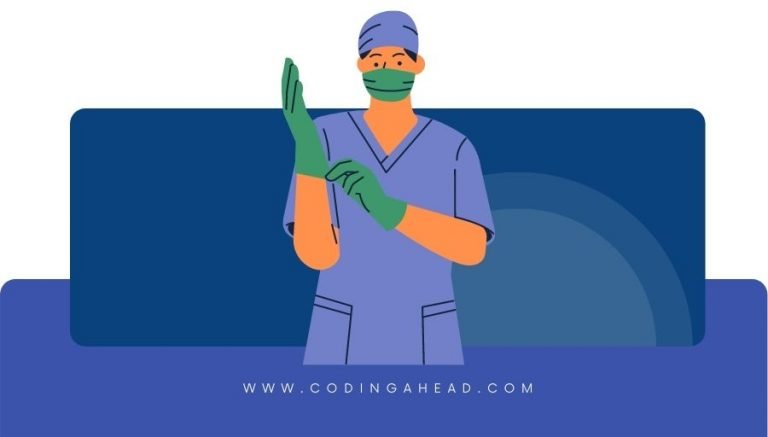How To Use CPT Code 14001
CPT code 14001 describes the procedure of adjacent tissue transfer or rearrangement for trunk defects ranging from 10.1 square centimeters to 30.0 square centimeters. This article will cover the description, procedure, qualifying circumstances, appropriate usage, documentation requirements, billing guidelines, historical information and billing examples.
1. What is CPT Code 14001?
CPT 14001 is a code used to describe the procedure of adjacent tissue transfer or rearrangement for trunk defects that range in size from 10.1 square centimeters to 30.0 square centimeters. This procedure involves the repair of defects in the patient’s trunk by using healthy tissues from an adjacent body part. The healthy tissue is transplanted to the primary or secondary integumentary defects of the trunk, and the incisions are closed with sutures.
2. Official Description
The official description of CPT code 14001 is: ‘Adjacent tissue transfer or rearrangement, trunk defect 10.1 sq cm to 30.0 sq cm.’
3. Procedure
During the procedure of adjacent tissue transfer or rearrangement (ATT) for trunk defects, the provider first prepares the patient by ensuring appropriate prepping and anesthesia. The provider then makes an incision around the wound to prepare it for transfer. Healthy tissue from an adjacent body part is then transplanted to the primary or secondary integumentary defects of the trunk. The provider carefully attaches the tissue and closes the incisions using sutures. This procedure is specifically performed for trunk defects ranging from 10.1 square centimeters to 30.0 square centimeters.
4. Qualifying circumstances
CPT code 14001 is used for patients who require adjacent tissue transfer or rearrangement for trunk defects that measure between 10.1 square centimeters and 30.0 square centimeters. The procedure is performed when the patient has primary or secondary integumentary defects in the trunk that need repair or reconstruction. The provider assesses the patient’s condition and determines the need for this specific procedure.
5. When to use CPT code 14001
CPT code 14001 should be used when the patient has a trunk defect that measures between 10.1 square centimeters and 30.0 square centimeters and requires adjacent tissue transfer or rearrangement. It is important to accurately measure the size of the defect to determine if it falls within the specified range for this code. If the defect is smaller than 10.1 square centimeters, a different code should be used.
6. Documentation requirements
To support a claim for CPT code 14001, the provider must document the following information:
- The size of the trunk defect in square centimeters
- The specific procedure performed, including details of the adjacent tissue transfer or rearrangement
- Date of the procedure
- Start and end time of the procedure
- Any additional procedures performed in conjunction with the adjacent tissue transfer or rearrangement
- Signature of the provider performing the procedure
7. Billing guidelines
When billing for CPT code 14001, ensure that the procedure performed falls within the specified range of trunk defects (10.1 sq cm to 30.0 sq cm). It is important to accurately measure the size of the defect to determine the appropriate code to use. Additionally, be aware of any additional procedures performed in conjunction with the adjacent tissue transfer or rearrangement, as they may require separate coding. It is important to follow the specific guidelines provided by the payer to ensure accurate billing and reimbursement.
8. Historical information
CPT code 14001 was added to the Current Procedural Terminology system on January 1, 1990. There have been no updates or changes to the code since its addition.
9. Similar codes to CPT 14001
There are several similar codes to CPT code 14001 that are used for adjacent tissue transfer or rearrangement procedures on the integumentary system. These codes include:
- CPT 14000: Adjacent tissue transfer or rearrangement, trunk defect 10.0 sq cm or less
- CPT 14020: Adjacent tissue transfer or rearrangement, scalp, arms, and/or legs; defect 10.1 sq cm to 30.0 sq cm
- CPT 14021: Adjacent tissue transfer or rearrangement, scalp, arms, and/or legs; defect 30.1 sq cm to 60.0 sq cm
- CPT 14040: Adjacent tissue transfer or rearrangement, forehead, cheeks, chin, mouth, neck, axillae, genitalia, hands, and/or feet; defect 10.1 sq cm to 30.0 sq cm
- CPT 14041: Adjacent tissue transfer or rearrangement, forehead, cheeks, chin, mouth, neck, axillae, genitalia, hands, and/or feet; defect 30.1 sq cm to 60.0 sq cm
9. Examples
- A patient with a 15.0 square centimeter trunk defect undergoes adjacent tissue transfer or rearrangement to repair the defect.
- A provider performs adjacent tissue transfer or rearrangement for a 25.0 square centimeter trunk defect in a patient.
- A 20.0 square centimeter trunk defect is repaired using adjacent tissue transfer or rearrangement by a healthcare provider.
- A patient with a 12.0 square centimeter trunk defect undergoes adjacent tissue transfer or rearrangement to reconstruct the area.
- A provider performs adjacent tissue transfer or rearrangement for a 28.0 square centimeter trunk defect in a patient.
- A 22.0 square centimeter trunk defect is repaired using adjacent tissue transfer or rearrangement by a healthcare provider.
- A patient with a 18.0 square centimeter trunk defect undergoes adjacent tissue transfer or rearrangement to repair the defect.
- A provider performs adjacent tissue transfer or rearrangement for a 30.0 square centimeter trunk defect in a patient.
- A 16.0 square centimeter trunk defect is repaired using adjacent tissue transfer or rearrangement by a healthcare provider.
- A patient with a 27.0 square centimeter trunk defect undergoes adjacent tissue transfer or rearrangement to reconstruct the area.


